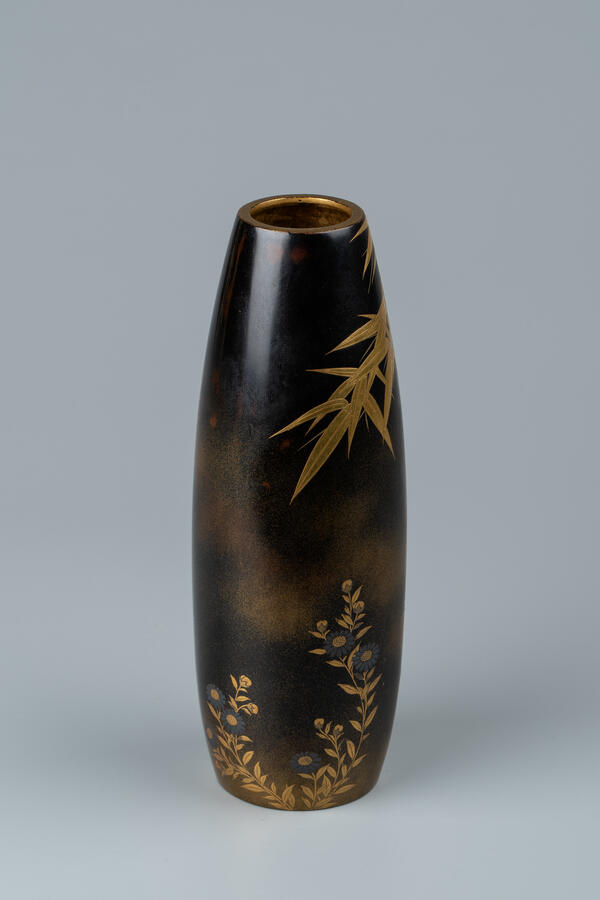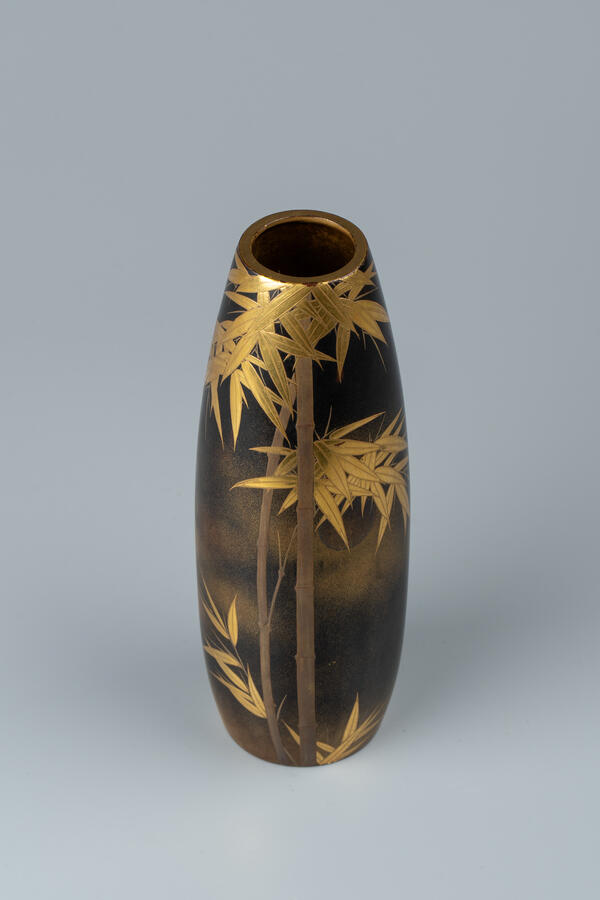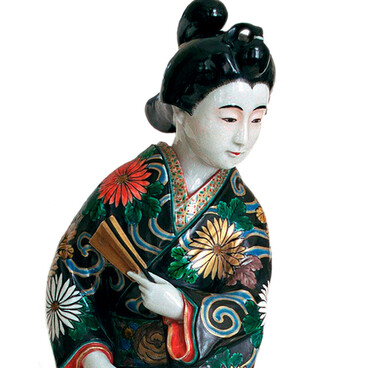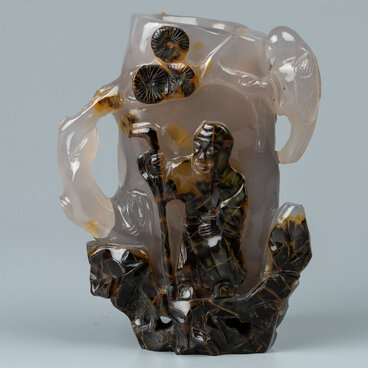The vase “Golden Bamboo” was transferred to the Samara Regional Art Museum from the collection of the entrepreneur and founder of a brewery in Samara, Alfred von Vacano. This exhibit is a great example of the famous lacquering technique “urushi”. Golden bamboo leaves brightly stand out against a dark background. The use of gold powder makes the transitions smooth, and the overall image is deeper and more pronounced.
Urushi is the word for both the traditional Japanese lacquerware art and the lacquer itself used for the manufacture of products. The technology of lacquer production was brought to Japan in the 6th — 7th centuries BC from China through Korea. Artistic lacquerware has become the most significant form of decorative and applied art in Japan. The lacquer paintings reflect the aesthetic ideas of the Japanese people, their contemplative and poetic worldview. The works of this deeply national art form have always been highly valued, as they required huge labor costs, considerable technical knowledge and, above all, a highly artistic skill. The technique of artistic lacquerwork includes sometimes more than a hundred lengthy steps. In Asian countries, lacquer is extracted by cutting the trunk or branches of the lacquer tree. The raw lacquer is carefully filtered and various oils and substances are added to it to obtain different colors and textures.
The most common basis for lacquerware is the coniferous hinoki tree (Japanese cypress), which does not crack with changes in temperature and is perfect for polishing. After a thorough sanding, a thin cloth and paper are glued onto the wood, which is then processed again to smooth out any protrusions. Each coat of lacquer should dry in moist air for at least 12 hours, and in some cases for several days. The final stage is coal dust grinding. Thus, up to 60 operations are performed only to obtain a lacquer surface. Then it is decorated. The most common black lacquer is obtained by adding iron salts to a transparent lacquer.
Products covered with smooth or embossed gold lacquer are famous for their unique beauty. The design for the makie-e lacquerware is made by sprinkling wet lacquer with gold or silver powder, for which a makizutsu bamboo tube or brush are used.
Urushi is the word for both the traditional Japanese lacquerware art and the lacquer itself used for the manufacture of products. The technology of lacquer production was brought to Japan in the 6th — 7th centuries BC from China through Korea. Artistic lacquerware has become the most significant form of decorative and applied art in Japan. The lacquer paintings reflect the aesthetic ideas of the Japanese people, their contemplative and poetic worldview. The works of this deeply national art form have always been highly valued, as they required huge labor costs, considerable technical knowledge and, above all, a highly artistic skill. The technique of artistic lacquerwork includes sometimes more than a hundred lengthy steps. In Asian countries, lacquer is extracted by cutting the trunk or branches of the lacquer tree. The raw lacquer is carefully filtered and various oils and substances are added to it to obtain different colors and textures.
The most common basis for lacquerware is the coniferous hinoki tree (Japanese cypress), which does not crack with changes in temperature and is perfect for polishing. After a thorough sanding, a thin cloth and paper are glued onto the wood, which is then processed again to smooth out any protrusions. Each coat of lacquer should dry in moist air for at least 12 hours, and in some cases for several days. The final stage is coal dust grinding. Thus, up to 60 operations are performed only to obtain a lacquer surface. Then it is decorated. The most common black lacquer is obtained by adding iron salts to a transparent lacquer.
Products covered with smooth or embossed gold lacquer are famous for their unique beauty. The design for the makie-e lacquerware is made by sprinkling wet lacquer with gold or silver powder, for which a makizutsu bamboo tube or brush are used.





